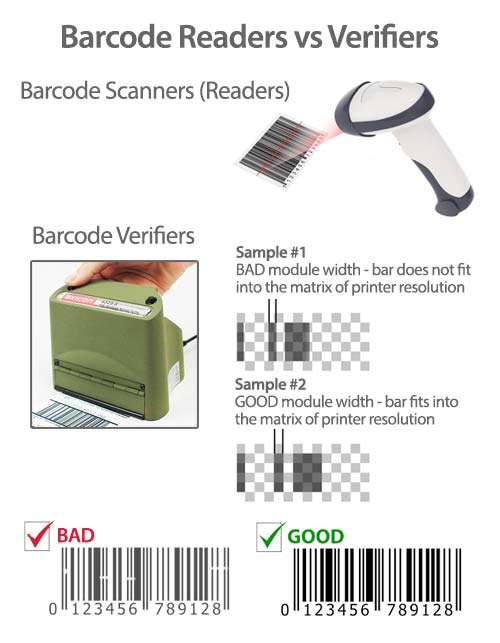Barcode Scanners vs Barcode Verifiers
Barcode scanners, also called barcode readers, scan 1D and 2D codes. They serve as an input device to translate the code back into readable information. There are several types of barcode scanners, including handheld, fixed and wearable.
When printing barcodes with a thermal printer, changes in speed and heat will affect the darkness of the code lines. Old or failing printers can also cause gaps or broken spaces on the barcode. Barcode verifiers are designed to catch these substandard labels and ensure that codes are printed correctly and meet industry quality standards. Compared to barcode readers, barcode verifiers are a superior measure of symbol readability because they normalize the range of performance among the multiple various types of readers. Barcode verifiers that are built into printers are capable of striking lines through bar labels, guaranteeing they can't be used,
A barcode scanner only reveals the data within the code, while a barcode verifier analyzes the code and reports on formal parameters based on international standards. These parameters measure a number of factors that affect barcode readability. Verifiers test different parameters for 1D, 2D and direct part mark (DPM) codes, based on governing standards such as an ISO international standard or ANSI grading.

Unlike barcode scanners, verifiers also pinpoint why a barcode won’t scan so the producer can take corrective action. Handheld or stand-mounted verifier software offers diagnostic features to identify problems with rejected barcodes and provide information needed to improve the code.
For more information or to discuss your project, Contact Us or call 888-237-8525.


